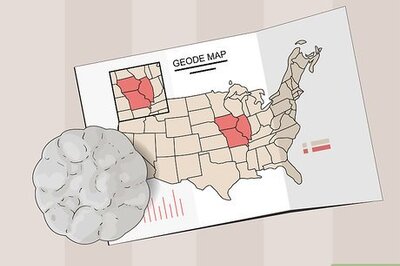
views
New Delhi: Think ten times before you call Delhi and NCR 'the most unsafe place for women under the sun' again. Delhi and the NCR is definitely the most unsafe place for women in India. But a comparison of the 2007 data (as that is the latest available from the National Crime Records Bureau) suggests that Delhi with 3.57 rapes per 1,00,000 people fared pretty well as compared to the safest city in the US, New York, which recorded 10.48 rapes per 1,00,000 people (according to FBI and NYPD's crime statistics).
Compare India's metro cities to other world cities like Los Angeles and it seems Indian women are a lot safer in Indian cities with their lax policing and salivating men. Los Angeles, with the fabled LAPD and progressive movie industry, witnessed 27.3 rapes per 1,00,000 people in 2006.
According to the British Crime Record Survey in 2010 carried out by the home office, 4.2 per cent of British women above the age of 16 would suffer rape or attempted rape at least once in their lifetime.
By the 2008 figures, even countries like Belgium (29.5 per 1,00,000) and France (16.4 per 1,00,000) had higher figures than Delhi, the most unsafe place in India for women.
The twin incidents of gangrapes, one in Kolkata of a 37-year-old mother of two and the other one in Noida of a 17-year-old schoolgirl, have hit our sensibilities hard but one should not get carried away. Crimes against women and specially those related to rape and sexual assault are a big problem for every city and every society.
It is important in this regard to dispel a few wrong notions many accept without batting an eyelid. Many would think that women occupy public spaces a lot more in New York. However, this contention does not hold true. In every major city of the world, women, and specially not-so-well-off women, work well into the evenings and take public transport home. Since they are not financially well off, they don't have a choice in dictating their working hours. And there are extensive areas in New York like parts of Queens and Bronx where even cabs don't want to go after sundown. One does not even talk about cities like Los Angeles, which is a city of cars and where public transport use is at one of its lowest in the US. The fact that Los Angeles records the highest number of rapes in the US disproves the theory that women hanging out in public places and using public transport are more likely to be assaulted.
Rape is definitely, acutely under-reported in India. There is no doubt. But this is as true for the United States. The perpetrators of more than one-third of total rapes in US happen to be family members and most of these go unreported, according to surveys and statistics. In the conservative white Bible belt as well among immigrant Catholic Mexican communities, very few report such incidents for fear of stigma.
In India, conviction rates in rape cases are abysmally low. True again but may be it would be wise to keep in mind that within the London Metropolitan Police area, the conviction rate in rape cases stood at six per cent in 2007.
This is not meant to be a casual comparison between New York, Delhi and other major world cities that undermines the violence and threat that overhangs the average Delhi girl. But the thought that they are alone in their sufferings and have the rawest deal is the most cocooned view one can have.
The Indian media also covers these incidents like they have become the order of the day. In this regard, Dave Prager, the American author of 'Delirious Delhi' who lived in Delhi with his wife, writes the following.
"It's clear even from the newspapers that Delhi's day-to-day dangers are nowhere near the level of even the safest American cities. The papers report every crime as if it heralds the end of days, but the fact that simple robberies make the news as often as they do suggests that bigger crimes are not occurring at a comparable rate. "Rs 1 lakh stolen from Punjab trader on bus," shouts one headline for a seven-paragraph article — a petty crime that, while unfortunate for the victim, wouldn't garner even a sentence in an American paper because so many bigger crimes would elbow it out of the way.
We just can't understand why Delhi's so safe. Not only do we not understand why angry young men haven't taken full control of the city, we can't even understand what keeps the grizzled old parking attendants from stealing the cars to which they're entrusted. In places like Defense Colony Market, rich businessmen routinely hand the keys to their million-rupee cars to a parking attendant with the accompanying promise of a ten-rupee tip. How could these poor men, when faced with such a quick ticket to easy street, not take advantage of it?
Never mind what Delhi's apocalyptic news media says. The real question is this: what's keeping a city of poor, jealous, sexually-frustrated young men from unleashing their aggressions and turning Delhi into Gotham City?"




















Comments
0 comment